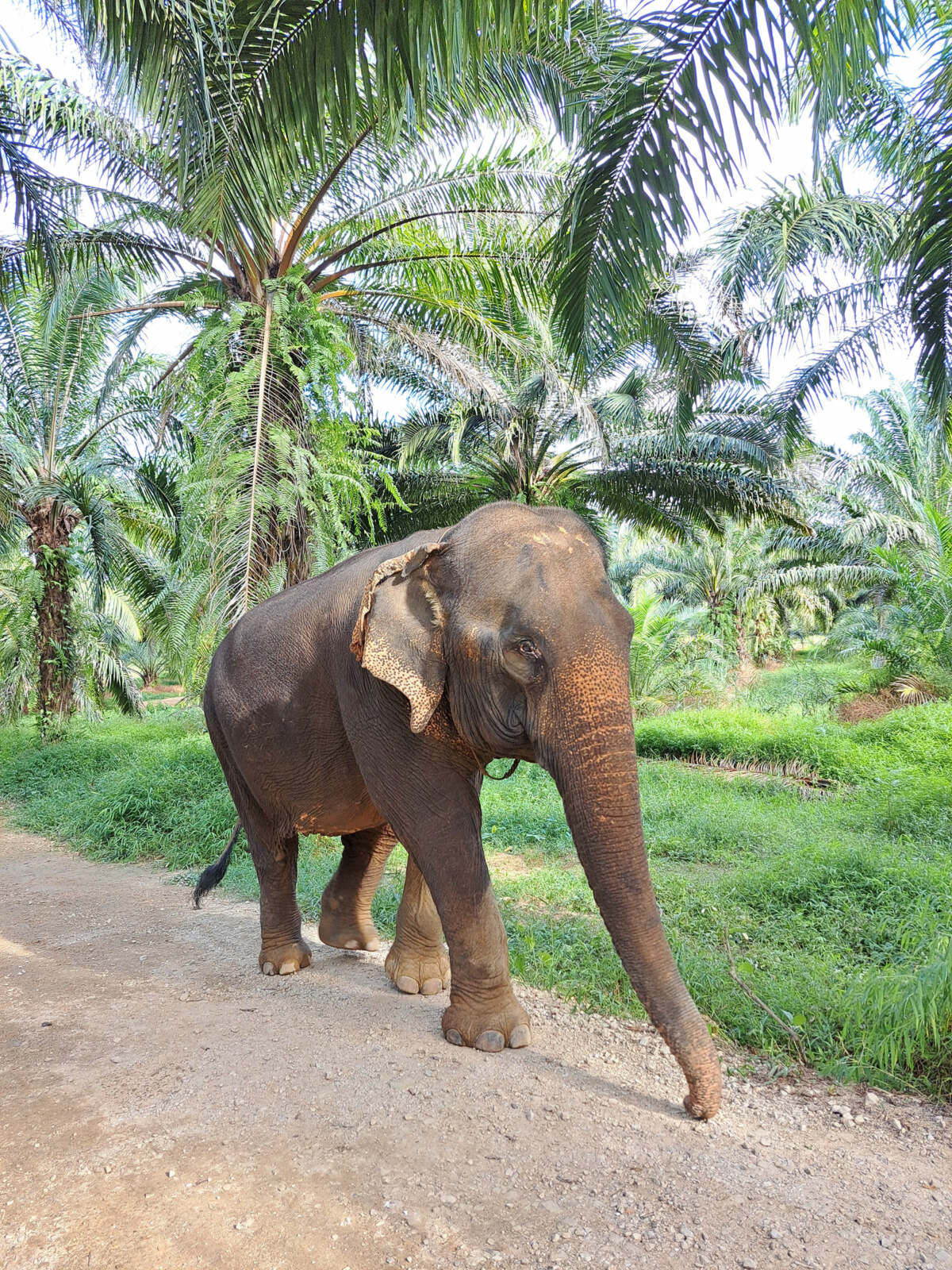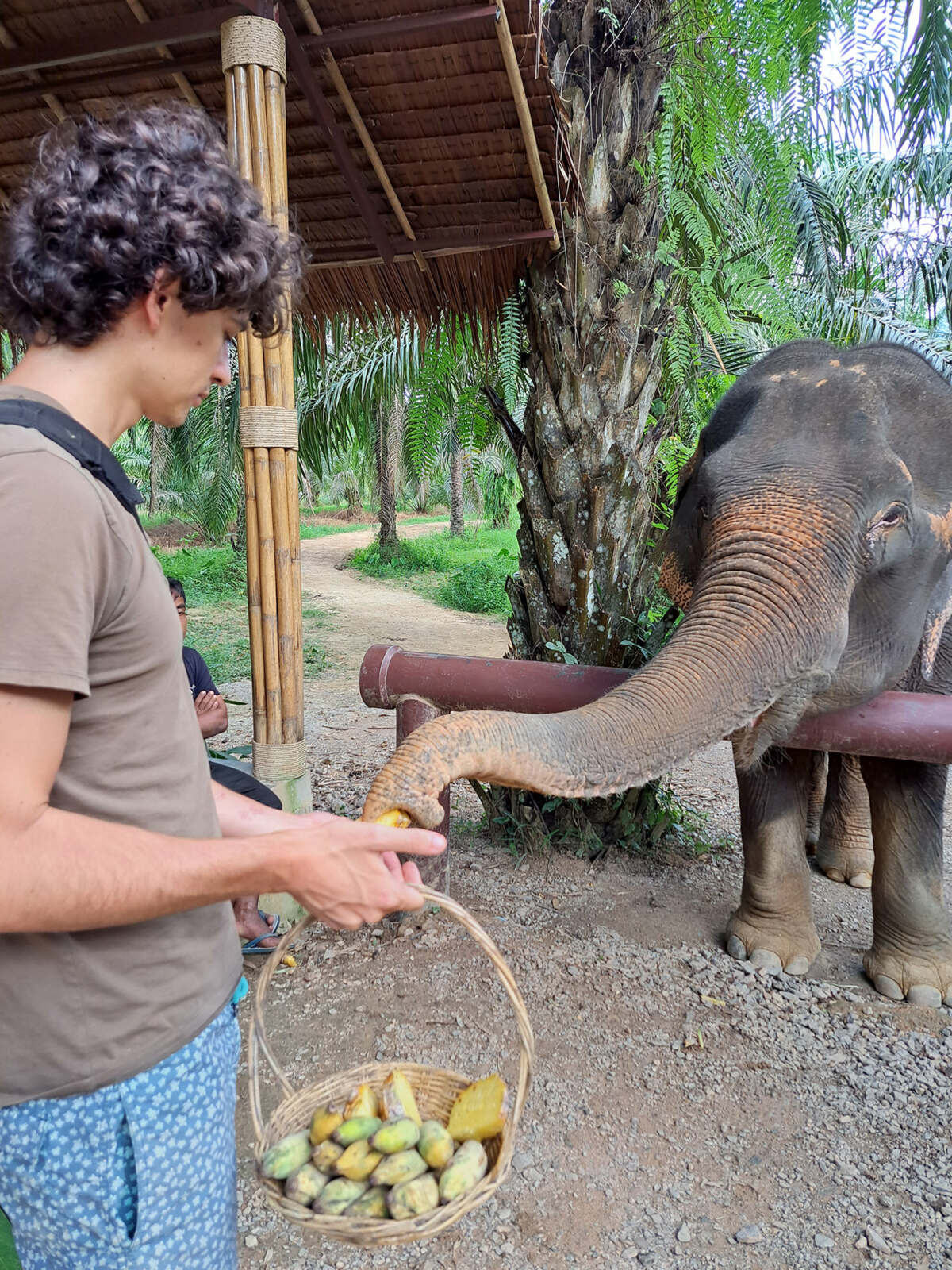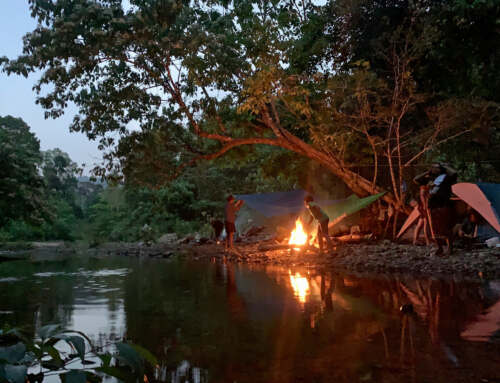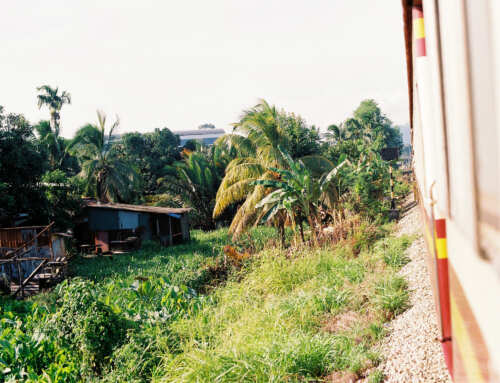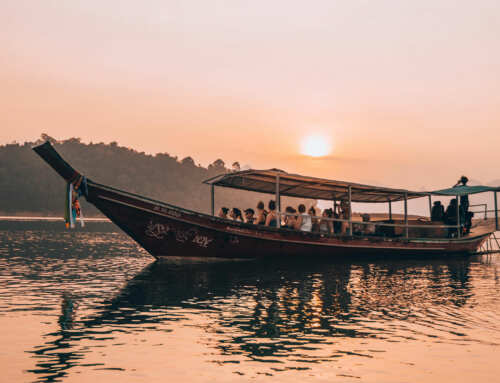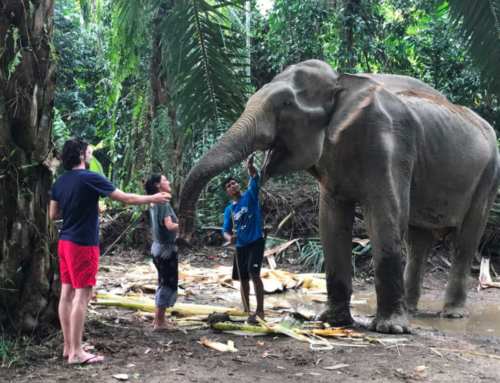What is the Khao Sok Elephant Sanctuary & Retirement Park?
The domestic Thai elephant typically has 2 choices – carry tourists on their back or pull logs out of the forest. As they age, these jobs become difficult and dangerous to their health. This is true of the Khao Sok elephant. In order to offer a better life we have created the Khao Sok elephant sanctuary or retirement park. Here we provide a safe space for the older Khao Sok elephant to enjoy life instead of working in exploitative situations. In addition to organic vegetables and fruit, our farm has plenty of space to provide them with a healthy, balanced elephant diet. Discover more about this Khao Sok elephant experience.
The Khao Sok elephant sanctuary and this unique Khao Sok elephant experience are part of an ongoing community based eco tourism program organized and promoted by the owners of Khao Sok Riverside Cottages. This is the best way to enjoy experiential travel and learn more about the places that you visit. You also provide really positive input into the lives and economies of local families. The following is the account of one of the visitors to the Khao Sok elephant sanctuary and retirement park.
At the bottom of the article are some useful tips for visiting the Khao Sok Elephant Sanctuary & Retirement Park.
Khao Sok elephant experience
“We met up at Khao Sok Riverside Cottages. Our group comprised of our guide, Aek, and four farang visitors. We were about to embark on a new Khao Sok elephant experience, where we could get up close and personal with a retired Khao Sok elephant! We headed west, passing spectacular mountains, and breathtaking vistas. Eventually, we arrived at a quiet and shady palm orchard, surrounded by beautiful rainforest and mountains. Then, we walked a little further into the orchard where we met the mahout caring for the elephant.
We felt welcome at once as a result of the mahout’s gentle and caring nature!”
Feeding a Khao Sok Elephant
“The elephant feeding area was right in the middle of the orchard. To the left was a small cooking area. To the right of the feeding area was where our Khao Sok elephant, 54-year old Malee, was patiently waiting.
It was a very surreal moment seeing an elephant that close. As she walked towards us, the reality of how large she was became so much more real.
It was such an incredible experience feeding Malee! She couldn’t get enough: it was one lot of fruits after another.
Aek told us that she eats up to 300kg of food per day! Then, we learned that elephant’s digestive systems are not like peoples’: what they eat passes right through them without resting in the stomach or intestines. Finally, Aek told us that Malee sleeps only 3 hours a night. The rest of the day she spends eating, or looking for things to eat!
To the touch, her skin was rough, with hair like wire. Her massive trunk was constantly in motion, taking food from our outstretched hands and putting it into her mouth. Soon, the feeding area was filled with the sound of grinding sugar cane and popping papaya.
Although she was a large muscular animal, she was still so gentle and graceful.”
The educational part
“After feeding this special Khao Sok elephant from the massive pile of fruits, we learnt that it would take about 5-8 months for the banana tree to bloom and a year for the sugar cane to mature. At the same time, Aek taught us about elephant culture in Thailand.
When we eventually returned to the feeding area, there was a vat of sticky rice bubbling lazily on the fire. We learnt that there is a traditional elephant food mix, and we were about to make it. We chopped papaya and bananas while the rice cooked. When it was cool and the fruit was mixed in, we began rolling the mixture into balls, using ground rice husks to keep it from sticking to our hands.
Just as we were finishing these vitamin balls, we spotted Malee stealing some fruit from outside her feeding area! She had crept up to the huge pile of fruit without us noticing and was eating everything there as fast as he could! She didn’t seem to care that we had spotted, and she kept eating as if we were not there.
Finally, Aek managed to get Malee back to her feeding area as we finished preparing the food.
As we fed her the vitamin balls, we learnt about her history as a working Khao Sok elephant.”
The Ways of the Mahout
“Aek even taught us a few words in the language used by Mahouts (elephant handlers) to communicate with these intelligent creatures. We were very curious about the ‘Di Khaw’ tool traditionally used by Mahouts to help control these giants. It was nice to learn that a true Mahout uses a strong voice and a fearless manner to control his animal. In contrast, striking the elephant or inflicting pain is viewed as the mark of an inferior mahout.
It really was incredible: the family was full of information to share with us. It was all interesting and provided a very real insight into a fantastic new culture.
After the feeding, we walked through the orchard and down to the river for a bath. Along the way, the father of the family, Ti, pointed out some of the highlights of the orchard. We saw ferns, orchids and banyan trees growing on the palms. Most impressive were two, 100-year old Durian trees that produce over 1,000 fruits per year!”
The bath
“The river at the Khao Sok elephant sanctuary was shallow and cool as we walked alongside the massive elephant. Aek had Malee kneel in the water so that we could splash and scrub her much easier. It was wonderful to see that there was no plastic here. Instead, we scooped water with handmade buckets made from various parts of the Betel palm!”
Khao Sok Elephant experience
If you are interested in this Khao Sok elephant experience we would urge you to go. However as we learnt there are some important things to understand before you go. This way you will get the best from the activity.
Please read on below to find out what you will need, safety guidelines and the relationship between the Mahout and his elephant.
Visiting the Khao Sok Elephant Sanctuary & Retirement Park
The Elephant and the Mahout
The elephant’s caretaker is known as a mahout. An elephant and their mahout have a strong bond which takes a lot of time and patience to form. Domesticated elephants need a mahout to take care of them. Thus, the mahouts can never stop working completely, since they have to provide food for their elephants.
Good mahouts really care for their elephants and want the best for them. This includes making sure the elephants are not a danger to themselves or others. For example, you may see your mahout holding a traditional hook, known as a takaw, to make sure the elephant respects the daily routine. A good mahout will never use the hook to harm the elephant, but they are a necessary part of communication. Without a takaw as a reminder, an elephant can act up and cause a dangerous situation for everyone.
You will often see that the Mahouts tie their elephant to a tree when they are not walking with them. This prevents the elephant from eating the fruit trees from neighbouring farms and getting into other kinds of trouble.
Lastly, you might see the mahout sit on the elephant’s neck, which is nothing to worry about, since it doesn’t hurt the elephant and the mahout knows what he’s doing.
Khao Sok Elephant Experience
What you will need
- Swim suit, a towel and change of clothes for the ride back to your accommodation.
- Shoes that can get wet and that will stay on when you are in the water. Tennis shoes or water sandals are recommended
- Sunscreen and mosquito spray – wait to apply! Read the safety warning below.
- Common sense and respect for the elephants – this activity is designed for the welfare of the animal and appropriate behaviour is required.
Your Safety Guidelines
(very important for you and the elephant)
- Always follow the directions of your guide and Mahout
- Do not come within 2 meters of the elephant unless its mahout gives you permission. Please never touch an elephant unless the mahout gives you permission.
- Move slowly and do not run. Don’t stand behind the elephant. Remember that elephants do not see very well.
- Parents – you must control your children at all times. Children under 18 must be with their parents at all times – you are in the presence of very large animals.
- Please do not scream, shout, or make loud noises around the elephant. Also no flash photography, it is very frightening for the elephant. Remember our elephant facts. They will help you to understand the elephants better.
- Sunscreen and mosquito spray are harmful to elephants. If you need to use mosquito spray, please wash your hands before touching or feeding the elephant. Sunscreen and mosquito spray are not allowed while bathing with elephants, you will have the opportunity to rinse off beforehand.
- When offering food to the elephant, give it straight away. Do not tempt or tease the elephant with the food, or hold on to it.
If you follow these guidelines you will have such a great time on your Khao Sok elephant experience.
Community Based Tourism
Aek and Ti are part of a larger network of family- and community member-partners working with Khao Sok Riverside Cottages to provide community-led, sustainable tourism in Khao Sok. For more information on their ongoing Khao Sok elephant sanctuary project, visit their Facebook page. For additional info on the original community-led tourism outfitter in southern Thailand, be sure to visit the website of Andaman Discoveries.
You can find more local adventures on our activities page! Once you’re in Khao Sok our staff will make sure you get the most from your time here!








